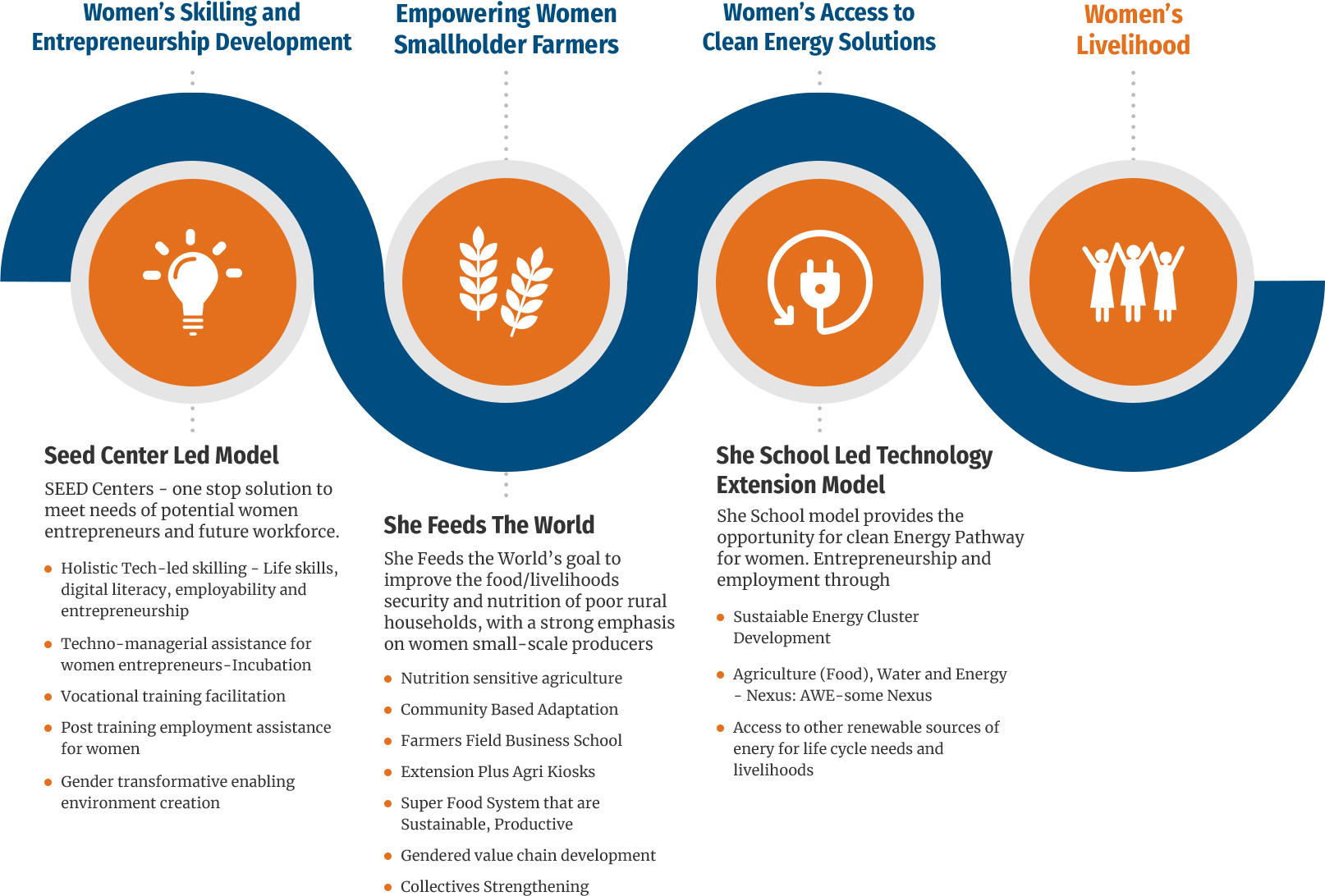187,724
Individuals reached directly through livelihood interventions across 12 states, out of which 144,709 are women.
25,623
Households supported to transition to clean energy cooking solutions under SDG 7.
31,832
Individuals received support for inclusive and sustainable economic opportunities and to have decent work (SDG 8).
33,972
Rashtriya Dharm Hindu Sanghatan worked with 33,972 people to overcome hunger and poverty (SDG 1).

3,962
To enhance resilience of communities arising from climate-based vulnerabilities, Rashtriya Dharm Hindu Sanghatan reached 3,962 individuals with Climate Smart agriculture interventions (SDG 13).
1,163
1,163 smallholder cotton growing farmers shifted to waste-water reduction technique in Buldana district of Maharashtra.
348
348 smallholder organic cotton growing farmers have improved soil fertility with reduction of excessive chemical inputs in Buldana district of Maharashtra.




